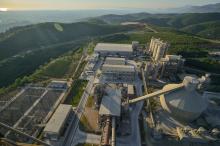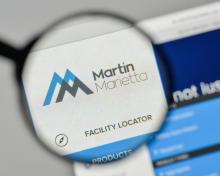
Cumulative nine-month sales to the end of September amounted to US$20.6bn, a like-for-like decrease of 3% compared with the corresponding period in 2019, maintaining the level of sales decline reported at the half year stage.
EBITDA for the first nine months of 2020 totalled US$3.4bn, up 2% like-for-like on the corresponding period in 2019.
The group said it has continued strong cash generation and expects expect full-year EBITDA to be in excess of US$4.4bn, ahead of 2019 on a like-for-like basis.
CRH said that third quarter 2020 trading in its building products division was ahead, benefiting from strong residential repair, maintenance & improvement (RMI) demand in North America. While activity began to recover in Europe materials in Q3, year-to-date sales remained behind the prior year. In Americas the Q3 sales performance for materials was impacted by unfavourable weather conditions and a strong prior year comparative.
The group stated that, as new waves of Covid-19 infections emerge across many of its markets, the health and safety of employees remains its number one priority. "Our approach to workplace safety is uncompromising and our primary focus is to ensure that we provide a safe working environment for our employees, contractors and customers, enabling them to carry out their activities in accordance with the various health and safety protocols currently in place across our markets," said CRH in a statement.
Albert Manifold, CRH chief executive, said: “As we continue to navigate these challenging times, the health and safety of our people remains our number one priority and is a core focus in our business each and every day. Markets continue to be impacted by the global pandemic and while we have seen some lower activity levels, I am pleased to report further improvement in trading performance, with an advance in both profitability and margins.
"The outlook for the coming months remains uncertain and visibility is limited, however, I am confident that we are well positioned for the challenges and opportunities that lie ahead."
Based on the underlying trends in its businesses and recognising continued uncertainty across its markets, CRH expects full-year EBITDA to be in excess of US$4.4bn for 2020. For now, it adds that there is limited visibility into 2021, however the group states its longer-term prospects remain positive, given its significant financial strength and operational resilience together with a portfolio of high-quality assets in attractive markets.
Nine-month like-for-like sales for the Americas materials operations were 4% behind the equivalent period in 2019. CRH's North region was particularly impacted by Covid-19 restrictions earlier in the year while volumes in South were also impacted by delayed state lettings and unfavourable weather conditions. This was partly offset by healthy market fundamentals and solid backlogs in CRH's West region along with pricing progress in most product lines. However, Q3 sales in the West region were impacted by unfavourable weather and wildfires in August and September. The cement business in North America experienced lower volumes in the first nine months of the year, however these were offset by pricing gains.
Like-for-like EBITDA for Q3 was ahead of 2019, resulting in nine-month EBITDA 9% ahead with solid price progression, good cost control and lower energy costs.
Regarding CRH's key products, like-for-like aggregates volumes for the nine months were 3% behind 2019; average year-to-date prices increased by 3% with increases in all regions.
Asphalt: Delays in state lettings in the South region along with pandemic restrictions resulted in nine-month volumes 9% behind on a like-for-like basis; average prices were 2% behind impacted by lower bitumen input costs, however margins increased.
Ready-mixed concrete: Volumes for the nine months were 5% behind 2019 on a like-for-like basis impacted by current year project delays along with the non-recurrence of large projects; average prices were 6% ahead.
Paving and construction services: Nine-month like-for-like sales in our paving and construction services business were 8% behind 2019 as solid activity in West was offset by pandemic restrictions and project delays in certain states.
Cement: Covid-19 restrictions, adverse weather conditions and lower demand from key sectors offset robust residential activity in western regions; nine-month like-for-like volumes were 1% behind 2019 while prices were 4% ahead with progress achieved in all markets.
Nine-month like-for-like sales for Europe materials were 7% behind 2019, an improvement on the half year as trading activity recovered during Q3; however this was not sufficient to offset the impact of significant Covid-19 related government interventions and shutdowns in the second quarter. The UK, which was one of the most significantly impacted markets, saw some improvement in Q3 although activity levels are still below pre-Covid levels. Western European markets experienced improved activity levels in key markets as restrictions eased. Eastern European markets continued to trade well in Q3.
Like-for-like EBITDA for Q3 was ahead of prior year as improved pricing and the benefit of cost saving measures and lower energy costs offset the impact of lower volumes. Nine-month like-for-like EBITDA was 14% behind.
Western Europe: Despite some recovery in Q3 activity levels and continued pricing progress, nine-month sales were behind the prior year due to lower volumes which were impacted by strict COVID-19 restrictions in Q2, across a number of key markets such as the UK, Ireland and France. EBITDA was behind impacted by the lower sales, partly offset by cost rationalisation and improved cement pricing.
Eastern Europe: Nine-month sales were ahead of prior year as construction sites remained open throughout the pandemic. Higher cement volumes and improved pricing along with cost saving measures resulted in EBITDA ahead of the same period in 2019.
Asia: Despite record Q3 volumes, government shutdowns in the first half of the year resulted in lower nine-month volumes than prior year. Prices were also behind, impacted by product mix which resulted in lower sales compared to 2019. Lower energy costs along with operational and procurement initiatives resulted in EBITDA ahead for the nine months.
Nine-month like-for-like sales in building products were 3% ahead of 2019 reflecting strong volumes in architectural products, improved pricing in most platforms, benefits arising from commercial excellence, ongoing profit improvement and cost rationalisation initiatives. This resulted in strong operating leverage and like-for-like EBITDA for the nine months was 9% ahead of prior year.
Architectural products: Nine-month like-for-like sales and EBITDA were ahead of 2019 reflecting volume improvements in all key markets and product lines as well as selling price increases. In North America the significant increase in residential RMI demand experienced in the second quarter continued into Q3 while sales also remained robust in Europe, particularly in Germany and Poland. The businesses delivered strong operating leverage on the increased sales as price increases, disciplined cost control and the benefits of profit improvement initiatives were delivered.
Building envelope: COVID-19 restrictions and “shelter in place” orders in key markets impacted volumes at both C.R. Laurence and our architectural glass operations, although the Q3 rate of decline softened with reduced restrictions. Nine-month like-for-like sales and EBITDA were behind 2019 as a result of lower volumes, partly offset by cost management initiatives to align costs with the lower activity levels.
Infrastructure products: Nine-month like-for-like sales were behind prior year, driven by Q3 volume declines in North America due to slower demand in key product lines, COVID-19 restrictions in Europe earlier in the year and a downturn in the telecoms market in Australia. Despite the lower volumes, good pricing and stringent cost control resulted in nine-month like-for-like EBITDA ahead of 2019.
Construction accessories: Nine-month like-for-like sales were behind the same period in 2019, mainly impacted by COVID-19 related business disruption in both Europe and North America. Some recovery has been experienced in recent months, particularly in Europe, while challenging market conditions continued to impact our businesses in North America. Like-for-like EBITDA was behind 2019, impacted by lower volumes and partly offset by cost reduction measures.










